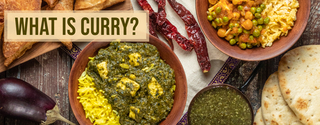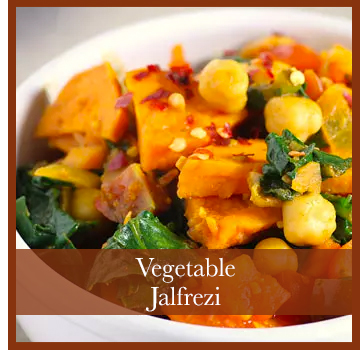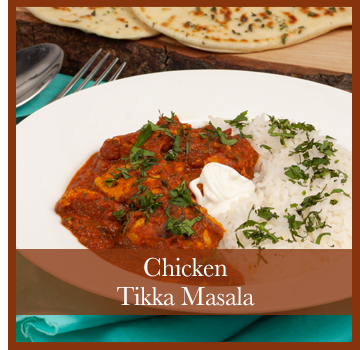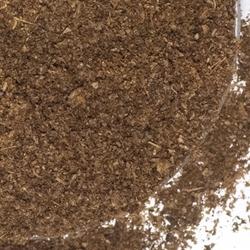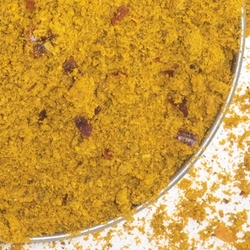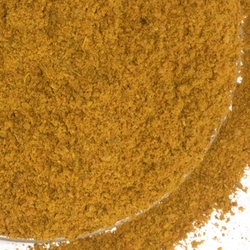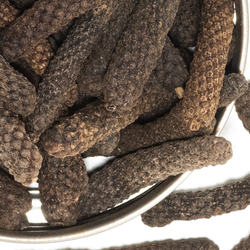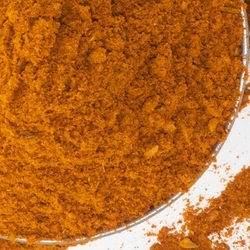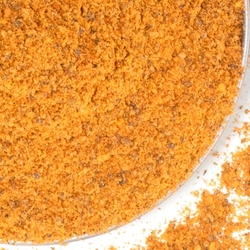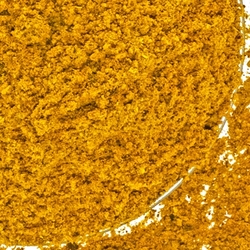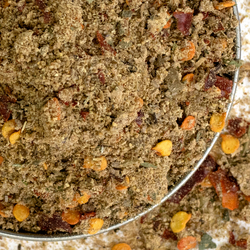What Is Curry
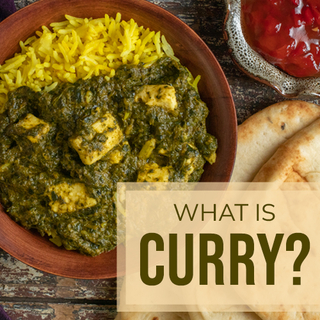
What is Curry?
A curry is a fragrant, often heavily seasoned dish made of a combination of vegetables and protein simmered in gravy, which is then served over rice, bread, barley, or other absorbent starch. It is a dish, not a specific spice or type of pepper. Curry can be spicy-hot, but heat is not a critical characteristic. It is an infinitely flexible dish that reflects how cultures influence each other when they meet. To define curry is to realize it’s become a catch-all term and can sometimes be frustratingly broad and inexact.
Curry comes from the Indian subcontinent and surrounding region, which includes Sri Lanka, Bangladesh, and Pakistan. The dishes we know as curry have been around for hundreds—perhaps even thousands—of years. A 3rd-century Greek treatise on gastronomy, Deiponosophistai, describes a banquet that featured a dish of boiled rice, topped with meat, "dressed in the Indian fashion."
The term "curry" as we know it, didn't exist until western colonizers came to India. The Portuguese conquistadores first set foot on the shores of India in 1498 and soon after appropriated the Tamil word kari—“sauce”-- and applied it in one sweeping gesture to these stew-like spiced dishes. Hence, curry as a food category was born.
Popular Indian Curries
When Portuguese explorer Vasco da Gama and his crew rounded the Cape of Good Hope and sailed to India in 1498, they brought New World foods like tomatoes and chile peppers. Indian cooks incorporated these ingredients into the local cuisine and altered the face of Indian cooking forever.
Indian curries are not called “curry” but go by the dish’s name that reflects either the region or an aspect of that dish. These curries feature warm ingredients like turmeric, chile peppers, fenugreek, and cardamom.
Jalfrezi
Jalfrezi is a hearty Indian curry that’s spiked with chiles. It translates as “stir fry” or “hot fry” and has an exciting history noted in Anglo-Indian cookbooks.
The British ruling elite in India would have feasts for events, like holidays or wedding celebrations, which often featured traditional British food. Leftovers from these events would then get handed down to the servants, only they thought British fare was bland and uninteresting. To make Jalfrezi, servants would heat ghee, onion, and water, add in the spiky bite of hot chiles, and then dress the pot with leftovers, spices, and herbs. Today, Jalfrezi is still a catch-all dish; it’s a great way to use the half an onion in your fridge and the sweet potato in your pantry for a quick and easy vegetable curry. Feel free to add your leftover roast chicken to the pot if you wish!
Vindaloo
We can even thank the Portuguese sailors for creating a curry that is still a favorite today. Vindaloo is a daringly spicy curry that showcases the fusion of Indian and western ingredients. It's made with tamarind and tomato paste, cardamom and vinegar, cumin, and as many chile peppers as you're willing to stuff into one dish. The word vindaloo is a mangled way of saying vinha d'alhos, or meat marinated in vinegar and garlic. This was how Portuguese sailors would preserve and store meat in preparation for oceanic voyages.
Often, vindaloos are made with pork or chicken, but you can cook anything you’d like vindaloo-style, like chickpeas and tomatoes in a hot and hearty Spiced Bean and Tomato Soup.
Tikka Masala
Though the name sounds appropriately Indian, tikka masala is an extraordinary example of how food crosses borders. Tikka masala is not Indian at all. Instead, it was invented in a curry shop in London. Legend has it that it was created in response to a cranky customer that wanted more gravy than he was initially served since chicken tikka is a comparatively dry kebab dish served over rice. The intensely seasoned masala sauce was what came after. Tikka masala—tikka means “bits and pieces”, while masala means “blend of spices”—has become a dish greater than the sum of its many parts. In 2001 chicken tikka masala was named a national dish of Great Britain. It illustrates how curries are adopted into different cultures and adaptable to demands of taste and preference. Chicken Tikka Masala relies on a yogurt-based marinade for tender chicken and plenty of seasoning to make a fragrant, creamy gravy.
Curry in Different Regions
The flexible, nourishing method of cooking that creates a curry has an almost universal appeal, and dishes that are now considered curries can be found worldwide. They have developed organically in other regions or were brought there via south or southeastern Asian trade or emigration.
Asian Curry
Thai curries are often lighter and brighter in their composition than their Indian cousins, featuring spices like ginger and galangal, lemongrass, basil, makrut lime, and coriander. Thai cuisine is one of the few cuisines not profoundly impacted by British imperialism because they never occupied this region.
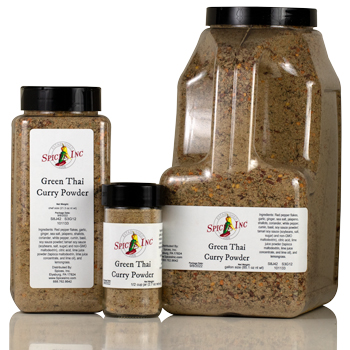 They have a centuries-old culinary history of highly-seasoned gravy-like stews served over rice, called kaeng. Kaeng is a broth or gravy dish made creamy with coconut milk and served over rice or noodles. It looks much like a curry. That word, however, only got adopted into the Thai lexicon in the mid-1800s, when the Thai royal house opened up its markets for broader international trade. That oversaw an influx of British influences and ushered in an Asian culture shift, part of which saw the word "kaeng" become "curry". Thai yellow curry would not exist without the British and their love for bright yellow turmeric. When it was initially assimilated into Thai cooking, the yellow curry was called "kaeng kari"—"curry curry". Green Thai Curry is green thanks to the color of its chiles; the same goes for pungent, spicy red Thai curry.
They have a centuries-old culinary history of highly-seasoned gravy-like stews served over rice, called kaeng. Kaeng is a broth or gravy dish made creamy with coconut milk and served over rice or noodles. It looks much like a curry. That word, however, only got adopted into the Thai lexicon in the mid-1800s, when the Thai royal house opened up its markets for broader international trade. That oversaw an influx of British influences and ushered in an Asian culture shift, part of which saw the word "kaeng" become "curry". Thai yellow curry would not exist without the British and their love for bright yellow turmeric. When it was initially assimilated into Thai cooking, the yellow curry was called "kaeng kari"—"curry curry". Green Thai Curry is green thanks to the color of its chiles; the same goes for pungent, spicy red Thai curry.
Curry came similarly to Japan. While that country has always been sovereign, Japan opened for trade with the west in 1853. Fragrant curry powder soon found its way in. By 1877 curry was in Japanese restaurants and, at the start of the 20th century, became a staple food of the Japanese military, which they then took to South Korea during the age of Japanese rule. Japanese curry is not hot but sweet, made with apples and ketchup. It is made with a roux of flour and butter; they even sell pre-seasoned packaged cubes of roux, which look somewhat like bouillon. It is enormously popular from one end of Japan to the other. Conventional wisdom says the people of Japan like that curry is sloppy and un-fussy, as opposed to the elegant but confined nature of most Japanese cuisine.
African Curry
Northern Africans have been building a curry tradition for roughly two thousand years along the Mediterranean coast.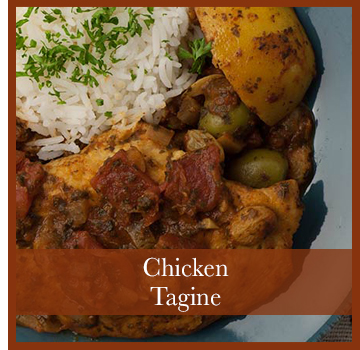 Thanks to trade with the Phoenicians, northern African kitchens were graced with spices like cinnamon, ginger, and black pepper very early on. These were quickly added to a tagine dish, the meat-vegetable-gravy curry named after the clay pot in which they are cooked. Traditional spice blends in a Mediterranean curry include the gorgeous Ras El Hanout from Morocco, a complex mix of dried herbs and spices that means "top of the shop". It was a mixture of the best a Moroccan spice vendor could offer. Curries throughout Africa tend to have a tremendous amount of condiments and dressings that can be added to personalize their meal as they see fit.
Thanks to trade with the Phoenicians, northern African kitchens were graced with spices like cinnamon, ginger, and black pepper very early on. These were quickly added to a tagine dish, the meat-vegetable-gravy curry named after the clay pot in which they are cooked. Traditional spice blends in a Mediterranean curry include the gorgeous Ras El Hanout from Morocco, a complex mix of dried herbs and spices that means "top of the shop". It was a mixture of the best a Moroccan spice vendor could offer. Curries throughout Africa tend to have a tremendous amount of condiments and dressings that can be added to personalize their meal as they see fit.
Curry made its way through the rest of Africa thanks to European imperialism. South African curries arose from colonization by both the Dutch and the British. The Dutch East India Company settled the Cape Town region in the 17th century to provide a supply station for sailors traveling around the Cape of Good Hope. To ensure the heavy lifting got done, they brought slaves from the islands of Indonesia and along the east coast of Africa. The east African slaves brought their cooking knowledge and spices from their homelands, and the Indonesian people had been making their form of curry, called "gulai" for hundreds of years. They began adapting the local foods to their taste. Since Malay was a common language spoken among the Indonesian and African slaves, they came to be known as the Cape Malay people. Cape Malay Curry is not overly spicy, and it's got a surprising lift from the combination of sweet and savory elements—cumin and ginger, beef, and apricots.
A thousand miles away and more than a hundred years later, British colonizers established a presence around Durban in the Natal area of South Africa. At the height of its power, the British Empire controlled approximately 30% of Africa's people. When the British started their colonization efforts in the 19th century, they came clutching their favorite bottles of curry powder. Since Britain had outlawed slavery in 1807, the Natal colony was worked by indentured servants brought over from India. So, the familiar Indian spice blends were used to season South African ingredients. Today, Durban has the largest Indian population outside of India, and Durban curry, having adapted to the natural and cultural environment, is often served not over rice but with potatoes. Durban also has a version of curry called bunny chow, served in a hollowed-out loaf of bread.
Caribbean Curry
In much the same way—the need for indentured servants to work plantations—curry made its way to the Caribbean. The British took control of Trinidad and Tobago in 1802 and established a plantation economy, but in 1807 outlawing slavery rendered them with the need for workers. Once more, the British sent indentured Indian servants to do the hard labor, and curry came with their arrival to the Caribbean. Trinidad Style Curry Chicken is a curry that is made of coriander and cumin and rich with earthy turmeric. It is not as chile forward as other curries. But fans of heat can take comfort that there’s no shortage of Scotch bonnet peppers in the Caribbean. They can light it on fire when they make a curry.
Curry has become difficult to define because it's got a presence in practically every corner of the world. Warm, comforting, soothing, fun, fiery, rich, indulgent…curries have it all. A few examples of curries, mainly from Thailand and Indonesia, existed as a food entity before the British empire and the Indian diaspora carried it around the world. This leads to their inexact nature; they are everywhere and belong to everyone. Many of them, relying on turmeric and black pepper, retain a sense of their Indian origins. But curry also embraces local ingredients to reshape itself into something unique in every corner of the world.

